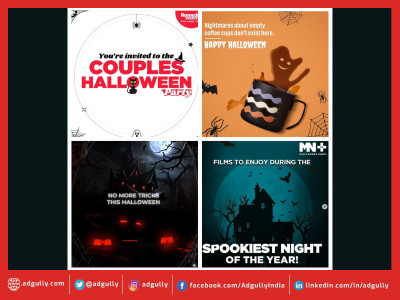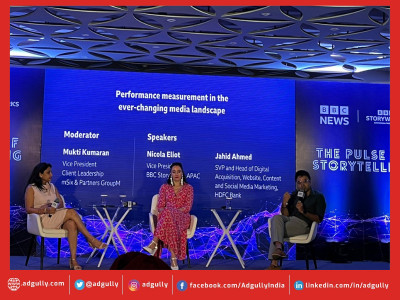Brand Storytelling: The Art of Engaging Customers at a Subliminal Level
Authored By Prerna Aggarwal, Chief Marketing Officer – Campus Activewear
In the digital era of start-ups and other new-age entities, attracting consumer attention via legacy means such as advertisements and conventional communiqués is no longer so effective. In today’s overcrowded marketplace, however, what works in differentiating organisations from their peers is brand storytelling.
This strategic tool focuses on creating a corporate narrative that strikes a chord with customers, finding resonance among the audience at a much deeper, emotional level, thereby forging long-lasting connections and long-term brand loyalty. When well managed, brand storytelling can ensure enduring success for enterprises.
The Emotional Connection
To elaborate, there are multiple benefits of compelling brand stories. These include capturing the attention of the audience and building trust; creating brand authenticity; inculcating a feeling of shared values with consumers; differentiating the business via distinct brand narratives so it stands head and shoulders above the competition; and, finally, increasing customer engagement, advocacy and word-of-mouth recommendations.
To comprehend the reasons for successful brand storytelling, it is important to first understand the human psyche. As inherently gregarious beings, humans remain intrinsically inclined to respond favourably to stories, especially those with an emotional narrative. Be it via prehistoric cave paintings or modern movies, storytelling has emerged as a critical component of human culture by stirring emotions, stimulating imaginations and evoking empathy.
Consequently, companies embedding storytelling into their marketing campaigns can tap into this innate human reaction. As a result, corporate messaging becomes more memorable and relatable. Since emotions play a pivotal role in the decision-making process of consumers, companies that can leverage positive emotions seamlessly through brand storytelling then forge a lasting impression. Consumers will be more likely to exhibit loyalty towards brands that have touched their hearts and created a bond by connecting through personal values.
There are various ways for companies to engage effectively with consumers through storytelling. For example, brand stories work well when they humanise the brand, permitting it to establish more authentic consumer connections.
But for effective storytelling, brands must understand the desires, aspirations and motivations of their target audience. This can be ascertained by undertaking market research, gathering data through social listening and actively heeding consumer feedback. By understanding consumer pain points and preferences, brands can align their story with the values and objectives of the audience, fostering a feeling of a shared identity and establishing a profound connection.
Specific Benefits of Storytelling
There are several benefits of brand storytelling. Some of these include:
Building long-term loyalty: By connecting with their audience emotionally via compelling narratives, brands can tap into empathetic emotions that help create strong bonds. When consumers identify with a brand’s narrative, they are more likely to become voluntary advocates or brand ambassadors. In turn, it engenders long-term loyalty based on an emotional connection.
Facilitating brand differentiation: In today’s saturated markets where most products and services can often seem similar, differentiating oneself from the competition is essential to grab greater mindshare and more market space. Herein, storytelling works as a robust differentiator by highlighting a brand’s novel values, qualities and purpose. When a distinct persona is crafted that finds resonance with the target group, it becomes much easier for customers to choose this brand over the others. This makes it one of the key reasons to create a captivating brand narrative.
Promoting authenticity: In an age when fake news is a global phenomenon sowing distrust among people vis-à-vis companies, customers increasingly seek brands that are authentic and trustworthy. Organisations that humanise their brands through storytelling can then highlight cherished values, along with the company culture as well as the organisational vision and mission. Authentic brand stories that have the ring of truth then increase their credibility and build deep trust with consumers through transparent practices. All of this helps customers relate to their brand at a subliminal level, fostering longstanding trust and credibility.
Increasing customer engagement and retention: By engaging consumers via effective storytelling, brands can develop a long-term relationship with them. Through the sustained sharing of stories that are interesting, relevant and relatable to customers, brands can hold the interest of their audience, encouraging them to return for more products or services. Audience interest can be retained through stories showcasing the brand’s evolution, milestones and more during its journey. Best of all, these engaged customers are likely to transform into staunch brand advocates, sharing such stories within their communities and expanding the reach of the company’s products.
Encouraging the desired actions: In essence, brand storytelling is not merely about coming up with enthralling narratives. Rather, it is concerned with ensuring eventual enterprise success. A well-narrated brand story should inspire action and encourage customers to move in the desired direction, which could involve a purchase or the use of a service. In select cases, it may mean acting as a brand ambassador. If the desired actions can be engineered, it could result in tangible business outcomes.
Disseminating the Stories
After the brand stories have been created, it is necessary to have appropriate strategies to disseminate them to the right audience. To build long-term relationships and foster candid connections, companies should then make certain the brand story is consistently embedded into all customer interactions and across various touchpoints.
This can be done by learning about all the channels used by the audience and the most suitable format for each one, which should include a blend of both written and pictorial or visual storytelling. The content formats could include articles, case studies, white papers, guidebooks or e-books, videos, micro-content, infographics, graphics, motion graphics, podcasts, etc.
Social media platforms can be used most effectively in sharing brand stories and generating greater awareness through strategic, targeted posts. The right influencers can also assist in greatly amplifying brand stories to reach a wider, more dispersed audience.
In conclusion, it is undeniable that compelling stories help brands stand apart from peers through a unique identity and the right positioning while creating strong emotional bonds with customers. If this happens, consumers are bound to choose the brand that resonates with their values despite other options being available.


















Share
Facebook
YouTube
Tweet
Twitter
LinkedIn